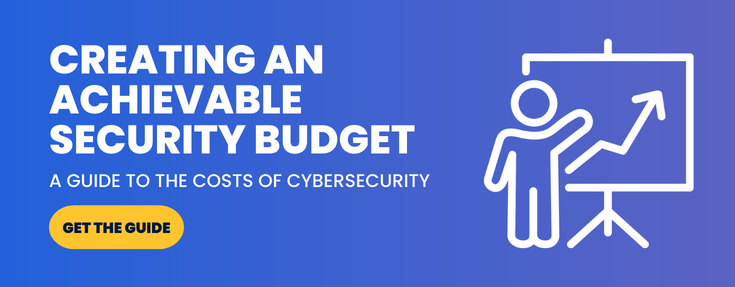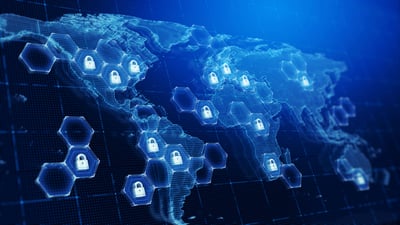What is CND?
Computer Network Defense (CND) is a form of cybersecurity for the securing of military and government computer systems. Like everyone else in the world, national agencies also have to secure their systems against malicious cyber attacks.
We live in a highly technological era, with computers and other technology being used for good all over the world. People use computers to create new things for people everywhere to enjoy. People use computers to write stories, make videos, and even build exciting new things online, like websites and video games.
Unfortunately, like every other good thing in the world, computers can also be used to do unscrupulous things, like hack into corporate networks and steal customer data and intellectual property. Hackers have been doing this since the internet was invented, forcing companies and webmasters to adapt their security practices with the changing times.
All over the world, militaries and government agencies are using computer network defense to secure their systems and protect their national security by keeping hackers out of highly important systems. This helps to make critical infrastructure and other important national systems safe from those who wish to do them harm.
What are the Challenges With CND?
Let’s face it: hackers and those who seek to use technology for their own nefarious gains are here to stay. With this ongoing problem, numerous new challenges arise every year to cybersecurity professionals who want to make sure systems are secure for the organizations and people who depend on their continued operations, as well as for military operations and government agencies.
These challenges present new obstacles for security professionals to adapt to and overcome. A key aspect of computer network defense is the ability to adapt to new problems and threats as they arise. This is why a good incident response plan with clearly defined cybersecurity protocols is of vital importance to professionals in security everywhere.
These are just a few of the issues that continue to plague security professionals to this day:
Malware
Malware basically just means “malicious software,” and it is everywhere. Hackers can employ various types of malware to achieve some of their nefarious goals across all different sectors. Whether they want to break into a corporate network, steal customer data, take over a website, or gain access to privileged accounts. There are all different types of malware. Ransomware is a type of malware that can encrypt notebook and desktop computers and demand a payment for their decryption. Remote access trojans can lie dormant in systems and then completely take them over, giving the hacker the sort of control he would have as if he were physically sitting at the keyboard.
Humans
Like it or not, human users are still the largest vulnerability present to any protected system. A computer network can be very secure, but the humans who protect it and use it are not infallible, and are susceptible to human failings. If a hacker can influence someone to click on a sketchy link or install a malicious program, they can still gain access to the system. The human vulnerability is one huge reason why every organization (especially governmental agencies) should make cybersecurity a key point to teach every employee. If employees are well learned about their organization’s cybersecurity practices, they are less likely to fall victim to hacking schemes.
Phishing
Phishing (and spear phishing) is still one of the main ways hackers find their way into protected systems. All it takes is an email appearing to be from an important person within the organization, and an unsuspecting employee could click on a link or install a malicious file from an email. This is all it takes for hackers to gain access to systems and do monumental damage.
Finances
The sad truth is that a lot of organizations just don’t put enough money into their cybersecurity systems. It is important for organizations to include a healthy security budget for a proper security program, educating all users (not just the security professionals) about the importance of good cybersecurity practices. Unfortunately, some organizations don’t obtain funding for a proper cybersecurity program until after they’ve fallen victim to a data breach or hack.
These are just some of the challenges facing CND today. These remain some of the biggest and consistent issues in an ever changing sea of digital threats on the rise today. Knowing some of these challenges facing your CND strategy can help you to adapt it and make it better as new challenges present themselves. This is why it is so important for security researchers to stay alert to new threats popping up in the news year after year.
Best Practices With CND
There are some proven methods for making sure CND approaches are rock solid for organizations everywhere. Adhering to these best practices is the best way to ensure your network stays protected from hackers and those with malicious intent.
- Utilize a firewall. One of the first and best defenses your network can employ is a firewall. A firewall acts as a barrier between an organization’s valuable data and the criminals trying to steal it. Firewalls provide an extra layer of security to the layers already in place. At the same time, your assets don’t always stay behind the corporate firewalls, so it is also important to have a good understanding of what those assets are doing while not behind a firewall.
- Visibility. Having visibility into and across your entire network is critical today. You need to know what traffic is on your network, should it be there, and has it always been there? You also need to have solid visibility into your cloud products you use today, Office 365, Google Gmail and Salesforce.com to name a few. Knowledge and awareness of who is accessing your systems, when they are and if they are the intended user accessing those systems. If they are not the intended user, you need to be alarmed immediately. Having this type of visibility is a minimum requirement with today’s technology landscape.
- Document and outline your cybersecurity practices. Have every plan, from incident response to the types of plans in place for different types of attacks, well documented and outlined. This will help in the review of CND practices, as well as help adapt these security policies to new problems that arise over time. Having a solid and adaptable plan for security is one of the best ways that organizations can keep their systems air-tight.
- Have a plan for mobile devices. If your organization relies on mobile devices such as smartphones and tablets, it is important to have a plan to support those as well. Keep an outline of who is issued which device, and ensure that every device is up to date with the latest software and security patches. Mobile devices can be updated through their app stores or settings dependent on which operating system they run. Check for updates for Google’s Android using Google Play Protect in the Google Play Store, or through the Android system settings. Apps for Apple’s iPhones can be updated through the Apple App Store, and system updates can be applied through the iPhone system settings by clicking “Check for Updates.”
- Educate employees on the importance of cybersecurity best practices. Make sure all employees are aware of the organization’s security practices. This will help make sure members of staff aren’t influenced by phishing scams to click on unknown links or install malicious files onto their systems.
How is CND Similar and Different to Civilian and Private Sector Cybersecurity?
CND in the military security sense has a few similarities and differences to its civilian and private sector counterparts.
The basic idea is the same, which is protecting systems from those who shouldn’t have access or who wish to cause harm to the system or use the contents of it for their own gains. Some of the ways it is used and deployed, however, can be vastly different.
Budgets can be a huge differential here. Militaries and government agencies often have a bigger budget for cybersecurity. They highly value the newest technology and security software to monitor and protect their networks in real time. Civilians and smaller businesses hoping to protect their data don’t always allocate finances to a huge security system.
The principles used between the two largely remain the same. Having a plan of action for cybersecurity in place is one of them. Making sure employees and anyone who works with the network is educated with the best cybersecurity practices is another similarity, as making sure everyone is informed is one way to make sure malicious actors can’t get in by using phishing schemes.
Consistently updating software and making sure the latest patches are installed is another huge similarity. One of the single most important factors to making sure all systems are up to date and protected is to ensure that the latest security patches from the manufacturer are installed onto your systems. Whether you’re a civilian, business owner, or a security professional in the military or a government organization, making sure systems are up to date is still the best line of defense against hackers looking to get in.
How Can the Private Sector Use Principles from CND?
Taking the basic approach to cybersecurity by gleaning things from CND is a great way for the private sector to protect their networks.
Individuals and businesses can utilize some of the steps taken in bigger CND plans for their own cybersecurity, such as learning about the hardware and software tools used and implement them into their own cybersecurity systems, should their budgets allow it.
They could also enlist the help of a third party to make sure their cybersecurity is top notch. Outsourcing companies such as BitLyft who specialize solely in cybersecurity can be a brilliant way to keep systems bulletproof. Enlisting help with your security every day, and having that scope of knowledge at your disposal means your systems should be protected against all the latest attacks. Many of these companies, including BitLyft, will monitor your networks in real time, helping protect your organization against threats and hacks, as the need arises.
If you have any questions about the service that we provide or you would like more information about our products, please do not hesitate to get in touch. We would be more than happy to provide you with greater insight into our processes and how they work.









